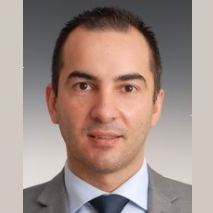Recent Advances in Breast Cancer Diagnosis, Treatment, Psychology, Management, and Reconstruction
A special issue of Medicina (ISSN 1648-9144). This special issue belongs to the section "Oncology".
Deadline for manuscript submissions: closed (20 July 2022) | Viewed by 15912
Special Issue Editor
Interests: breast cancer; breast reconstruction; oncoplastic surgery; craniofacial surgery; maxillofacial surgery; nerve surgery; pediatric plastic surgery
Special Issues, Collections and Topics in MDPI journals
Special Issue Information
Dear Colleagues,
Breast cancer in the United States is the most common cancer in women after skin cancer, regardless of race or ethnicity. The late detection and advanced-stage diagnosis of breast cancer are still current issues in several countries. Lymphedema after lymph-node dissection or radiation therapy occurs in 10%–40% of patients with breast cancer.
Breast cancer survivors’ social experience has been studied. Household size, psychosocial well-being, and social threat anxiety have been demonstrated to contribute to the ultimate patient wellness and health. These data are worrisome and push us researchers and scientists to find new solutions and innovations that allow early diagnosis, effective treatment, and reconstruction. Targeted interventions among breast cancer patients may be helpful to reduce late diagnosis and undesirable outcomes.
New understandings of tumor biology have made possible considerable progresses. Neoadjuvant systemic treatments result in significant tumor shrinkage in many patients. Intraoperative radiation therapy is an alternative to whole-breast irradiation in selected early-stage breast cancer patients. Nipple-sparing mastectomy, skin-sparing mastectomy and oncoplastic reconstruction are now the gold standard for treatment and reconstruction. Lymphaticovenular anastomosis and other treatments for upper extremities lymphedema after breast cancer have been effectively applied.
I invite colleagues from all over the world to contribute to this Special Issue on breast cancer. Radiologists, psychologists and psychiatrists, general surgeons, plastic surgeons, and breast cancer scholars in general are encouraged to submit manuscripts. We will consider submissions in the form of case reports, original research articles, reviews, commentaries, discussions, and letters to the Editor. Now more than ever it is necessary for breast cancer specialists to communicate with each other about the new possible strategies and innovations in the diagnosis, treatment, psychology, management, and reconstruction of breast cancer, with the final goal of fighting this neoplasm that unfortunately still afflicts millions of women and men worldwide.
Dr. Andrea Sisti
Guest Editor
Manuscript Submission Information
Manuscripts should be submitted online at www.mdpi.com by registering and logging in to this website. Once you are registered, click here to go to the submission form. Manuscripts can be submitted until the deadline. All submissions that pass pre-check are peer-reviewed. Accepted papers will be published continuously in the journal (as soon as accepted) and will be listed together on the special issue website. Research articles, review articles as well as short communications are invited. For planned papers, a title and short abstract (about 100 words) can be sent to the Editorial Office for announcement on this website.
Submitted manuscripts should not have been published previously, nor be under consideration for publication elsewhere (except conference proceedings papers). All manuscripts are thoroughly refereed through a single-blind peer-review process. A guide for authors and other relevant information for submission of manuscripts is available on the Instructions for Authors page. Medicina is an international peer-reviewed open access monthly journal published by MDPI.
Please visit the Instructions for Authors page before submitting a manuscript. The Article Processing Charge (APC) for publication in this open access journal is 1800 CHF (Swiss Francs). Submitted papers should be well formatted and use good English. Authors may use MDPI's English editing service prior to publication or during author revisions.
Keywords
- breast cancer
- breast reconstruction
- prosthesis implantation
- radical surgery
- autologous tissue reconstruction
- early diagnosis
- lumpectomy
- mastectomy
- psychological impact
- cancer therapy
- cancer management
- oncoplasty






